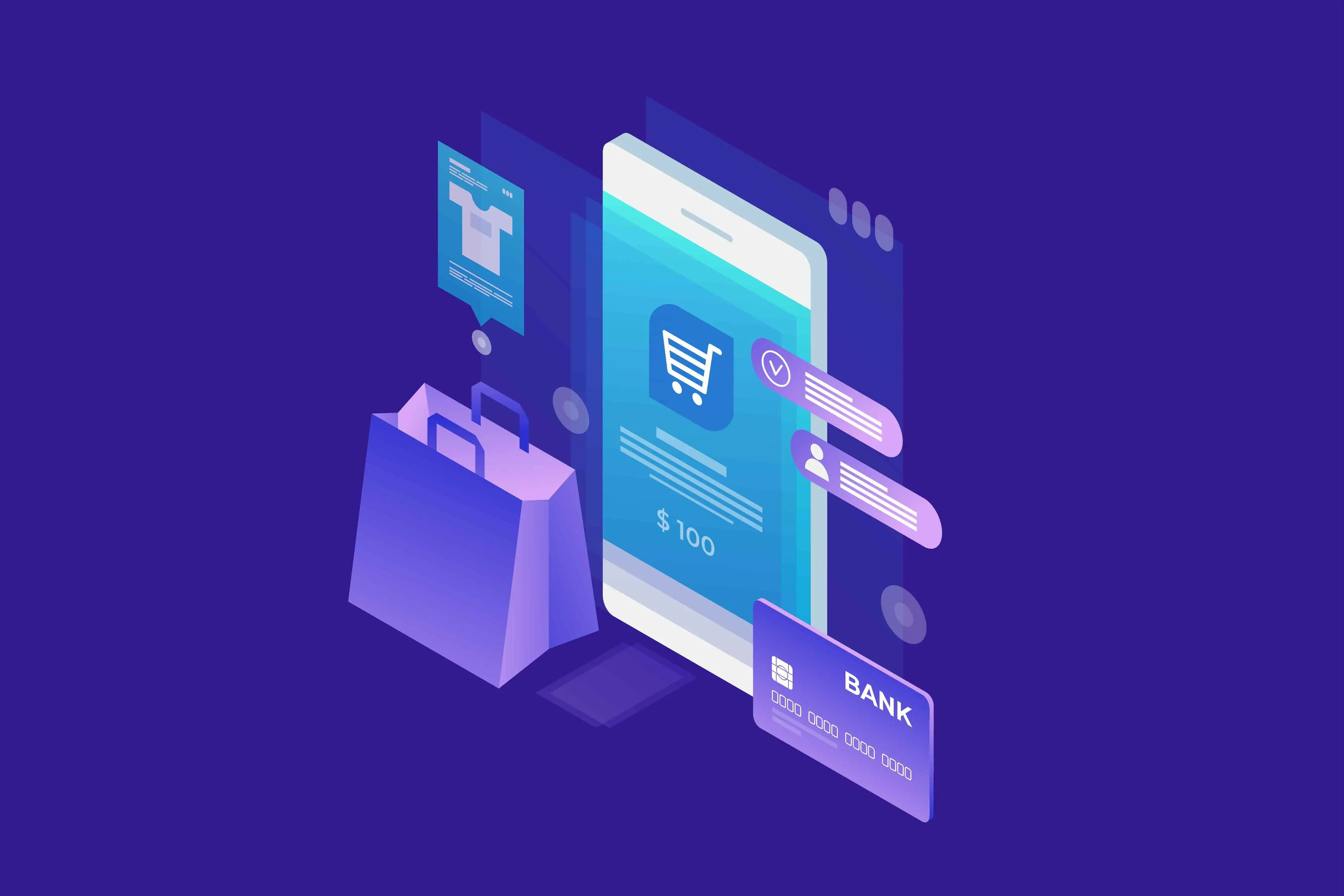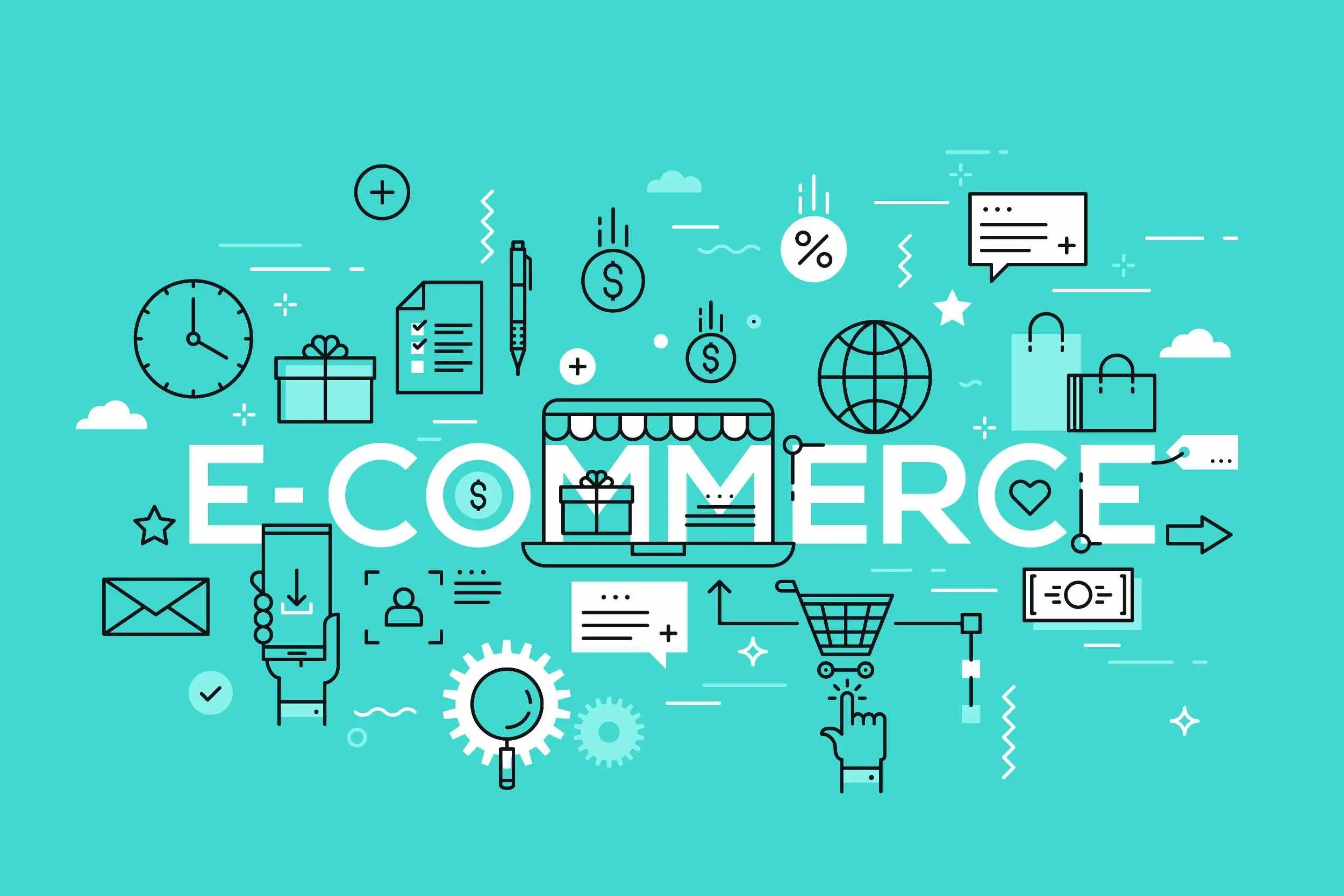Every digital transaction, from a simple click to a complex sale, relies on robust hosting solutions working seamlessly behind the scenes. In the digital marketplace, two distinct models prevail: e-commerce, which focuses solely on online sales, and e-business, which encompasses a broader spectrum including operations, customer service, and partnerships.
Effective hosting not only secures and scales a business’s digital presence but also enhances its overall performance. This article delves into how hosting solutions are pivotal in supporting and advancing the capabilities of e-business and e-commerce ventures, demonstrating their indispensable role in the digital economy.
The Evolution of E-Business
In the 1990s, the Internet underwent a transformative evolution from ARPANET to a global force, setting the stage for E-Business. The introduction of the World Wide Web in 1991 revolutionised information sharing, providing fertile ground for early online businesses like CompuServe and AOL.
The late 1990s witnessed the Dot-Com Boom, marked by a surge in online businesses. However, this enthusiasm led to the Internet Bubble burst in the early 2000s, prompting a shift towards sustainable business models.
Post-Dot-Com, a sense of caution prevailed, with a focus on sustainable models rather than just a digital presence. The mid-2000s saw the maturation of e-commerce, with established players like Amazon thriving and new models emerging.
The 2010s brought the Mobile Revolution, with mobile commerce gaining prominence. The integration of technologies like AI and data analytics transformed e-business strategies. Globalisation and cross-border e-commerce flourished, breaking geographical barriers.
Today, E-Business goes beyond online transactions, encompassing a holistic approach to leveraging digital technologies for overall business improvement. Cloud computing, big data analytics, and IoT play crucial roles in enhancing organisational efficiency.
The history of e-commerce and e-business reflects a dynamic journey from the Dot-Com Boom to a more robust, diversified, and technologically sophisticated digital business landscape.
E-Business

E-Business, or Electronic Business, is a holistic approach to conducting business processes using electronic means and information technology (IT). It includes both internal and external business activities, transforming traditional methods into digital processes for enhanced efficiency, collaboration, and customer satisfaction.
E-Business extends beyond online transactions, covering a broad spectrum of operations within an organisation and its interactions with external stakeholders.
Types of E-Business Models
Business-to-Business (B2B): In B2B E-Business, transactions occur between businesses. especially in supply chain management. Manufacturers, wholesalers, and retailers use electronic transactions to simplify procurement, inventory management, and distribution processes.
Business-to-Consumer (B2C): B2C E-Business involves transactions between businesses and individual consumers. This model is familiar to online shoppers who purchase goods or services directly from online retailers, such as Amazon or Alibaba.
Consumer-to-Consumer (C2C): C2C E-Business facilitates transactions between individual consumers. Online auction platforms like eBay exemplify this model, where individuals can buy and sell products directly to and from each other.
Consumer-to-Business (C2B): In C2B E-Business, consumers offer products or services to businesses. This model is evident in platforms where individuals provide freelance services or sell user-generated content to businesses.
Key Components
Information Technology Infrastructure: The foundation of E-Business lies in a robust IT infrastructure, including hardware, software, networks, and databases, enabling seamless digital operations.
Digital Customer Relationship Management (CRM): E-Business emphasises the use of digital tools for managing and optimising interactions with customers. Digital CRM systems track customer preferences, provide personalised experiences, and enhance customer satisfaction.
Online Supply Chain Management (SCM): E-Business integrates digital technologies into supply chain processes, improving efficiency, reducing costs, and ensuring timely delivery of products or services. This includes inventory management, order processing, and logistics optimization.
Case Study
Founded by Jeff Bezos in 1994, Amazon is a prime example of successful E-Business. Starting as an online bookstore, it transformed into a global giant with a wide range of products and services.
Its success is attributed to a user-friendly platform, robust B2C and C2C models, advanced recommendation algorithms, and efficient online supply chain management. Amazon's E-Business model illustrates the transformative impact of leveraging digital technologies on the retail industry.
Advantages and Disadvantages of E-Business
Advantages
Disadvantages
Advantages of E-Business
Broader Scope: E-Business encompasses a wide range of digital processes, fostering collaboration, CRM, supply chain management, and more, leading to comprehensive business optimization.
Integrated Approach: E-Business adopts an integrated approach, allowing seamless coordination of various business functions, resulting in improved efficiency and effectiveness.
Global Reach: E-Business enables businesses to reach a global audience, breaking down geographical barriers and expanding market reach.
Cost Efficiency: It often leads to cost savings as digital processes can be more efficient than traditional methods, reducing overheads related to physical infrastructure.
24/7 Availability: E-Business allows businesses to operate around the clock, providing products or services to customers at any time, enhancing accessibility.
Challenges of E-Business
Complexity: Implementing and managing the diverse components of E-Business, including internal and external processes, can be complex. Integrating digital technologies across the entire business requires careful planning and execution.
Higher Resource Requirements: The broader scope of E-Business often demands significant investments in IT infrastructure, skilled personnel, and ongoing technological advancements, leading to higher resource requirements.
Security Concerns: E-Business faces the challenge of cybersecurity threats, including data breaches, hacking, and unauthorised access, which can compromise sensitive information.
Technical Issues: Businesses may encounter technical glitches, server downtimes, or compatibility issues, affecting the overall functionality of e-business platforms.
Dependency on Technology: Reliance on digital technology makes businesses vulnerable to disruptions caused by technical failures, cyber attacks, or rapid technological changes.
Exploring E-Commerce

E-Commerce(Electronic Commerce) refers to the buying and selling of goods and services over the internet.
It is a subset of E-Business that specifically focuses on online transactions. E-Commerce involves the electronic exchange of money for goods and services, eliminating the need for physical presence or traditional brick-and-mortar establishments.
Popular E-commerce Platforms
Shopify: A widely-used platform known for its ease of use and flexibility. It offers a range of customizable templates and extensive app integrations. This platform is suitable for small to medium-sized businesses.
WooCommerce: This WordPress plugin makes your website into a complete online store, offering flexibility and scalability, especially for businesses using WordPress.
Magento: An open-source platform comes with a robust feature set. It is suited for larger businesses with complex requirements and a need for customization.
BigCommerce: A hosted E-Commerce solution focuses on scalability. It offers a variety of built-in features and is suitable for businesses of different sizes.
Wix eCommerce: Part of the Wix website builder provides an integrated E-Commerce solution. It is ideal for small businesses and those looking for a user-friendly platform.
The Role of E-Commerce in Retail and Services
Global Reach: E-Commerce enables businesses to reach a global audience, breaking down geographical barriers. Retailers and service providers can access customers beyond their local markets, expanding their reach and potential customer base.
24/7 Accessibility: Online platforms operate around the clock, providing consumers with the convenience of shopping or accessing services at any time. This constant availability enhances customer satisfaction and contributes to increased sales and service interactions.
Cost Efficiency: E-Commerce reduces the need for physical storefronts and allows businesses to operate with lower overhead costs. Online transactions and digital service delivery often lead to more cost-effective business operations.
Enhanced Customer Experience: Online platforms provide a seamless and personalised experience for customers. Features like product recommendations, easy navigation, and secure payment options contribute to an improved overall customer experience.
Data-Driven Insights: E-Commerce platforms gather valuable data on customer behaviour, preferences, and trends. Retailers and service providers can leverage this data for targeted marketing, inventory management, and overall business strategy.
E-Commerce significantly shapes the retail and services industries, fostering global accessibility, improving customer experiences, and driving cost-effective and data-driven business operations. Its influence continues to grow as businesses adapt to the evolving digital landscape.
Example of a Successful E-Commerce Business
Taobao and Tmall: These platforms cater to the B2C market, allowing businesses and individuals to sell directly to consumers. Taobao focuses on smaller businesses and individuals, while Tmall hosts larger, branded stores.
Alibaba: A Chinese E-Commerce platform connects businesses and consumers globally. It's primarily focused on B2B transactions but also includes B2C and C2C services.
Etsy: Specialising in handmade, vintage, and unique products, this platform is well-suited for artisans, crafters, and small businesses with distinctive items.
Rakuten: A Japanese E-Commerce and online retail platform offers a variety of products and services, similar to Amazon.
Newegg: Focused on electronics and technology products, this platform is popular among tech enthusiasts and those looking for computer hardware and software.
Zalando: A European online fashion platform specialises in clothing, shoes, and accessories from various brands.
Craigslist: A classified advertisements website has sections dedicated to jobs, housing, services, and goods. This platform facilitates local transactions and services.
Advantages and Disadvantages of E-Commerce
Advantages
Disadvantages
Advantages of E-Commerce
Direct Customer Engagement: E-Commerce facilitates direct engagement with customers, providing a platform for businesses to understand and respond to customer needs in real-time.
Ease of Access: Customers benefit from the convenience of accessing a variety of products or services anytime, anywhere, contributing to a more accessible and personalised shopping experience.
Global Market Reach: E-Commerce allows businesses to reach a global audience, breaking down geographical barriers and expanding market reach beyond local boundaries.
Cost Efficiency: E-Commerce can reduce operational costs associated with physical stores, such as rent, utilities, and staffing, leading to potential cost savings for businesses.
Increased Customer Base: The online marketplace provides access to a broader customer base, attracting new customers and helping businesses grow their audience.
Disadvantages of E-Commerce
Intense Competition: The popularity of E-Commerce has led to intense competition, especially among similar product or service providers. Standing out in a crowded market requires strategic differentiation.
Reliance on Customer Trust: E-Commerce success is heavily reliant on customer trust. Security concerns, data breaches, or poor customer experiences can erode trust, impacting the reputation and longevity of an E-Commerce business.
Security Concerns: E-Commerce faces the ongoing challenge of cybersecurity threats, including data breaches, fraud, and the potential compromise of sensitive customer information.
Online Payment Risks: The reliance on online transactions introduces the risk of payment fraud, unauthorised access, and issues related to the security of financial transactions.
Technological Evolution: Rapid technological advancements require businesses to continually adapt their E-Commerce platforms, leading to challenges in keeping up with evolving technologies.
Key Differences Between E-Business and E-Commerce
| Criteria | E-Business | E-Commerce |
|---|---|---|
| Definition | Use of electronic technologies to conduct business activities. | Subset focused on online buying and selling of goods and services. |
| Scope | Encompasses a wide range of electronic business activities, such as online collaboration, customer support, and internal digital processes. | Primarily involves online transactions, with a focus on the exchange of goods and services over the internet. |
| Operational Focus | Comprehensive business operations beyond transactions. | Focus on electronic aspects of buying and selling. |
| Examples | Online collaboration tools, CRM systems, supply chain optimization. | Online retail platforms, marketplaces, digital payment systems. |
| Technological Requirements | Diverse set of technologies supporting various business processes, including communication tools, CRM software, and digital infrastructure. | Specific technological requirements tailored for online transactions, secure payment processing, and efficient order fulfillment. |
| Customer Interaction | Involves a broader range of customer interactions, including collaboration, support, and tailored digital experiences. | Primarily focuses on customer interactions related to the buying and selling process, such as online product browsing, purchase, and support. |
| Impact on Business | Impacts overall business operations by digitizing and optimizing various processes, fostering efficiency, and enhancing collaboration. | Directly affects the business model, revenue generation, and customer relationships through online transactions and digital commerce strategies. |
| Business Processes | Focuses on optimizing various internal and external business processes. | Concentrates on streamlining processes directly related to online transactions. |
| Business Model Impact | Impacts overall business model by introducing digital efficiencies and transforming traditional practices. | Directly shapes revenue generation model and customer interaction strategies. |
| Customer Relationship | Aims at building and enhancing relationships with both internal and external stakeholders. | Primarily concerned with customer relationships related to online buying, selling, and support. |
The Future Landscape of E-Business and E-Commerce
Emerging Trends in E-Business and E-Commerce
Omnichannel Experiences: Businesses are increasingly focusing on providing seamless omnichannel experiences, integrating online and offline interactions to enhance customer engagement and satisfaction.
Voice Commerce: The rise of voice-activated devices and virtual assistants is giving birth to voice commerce, allowing users to make purchases and interact with businesses using natural language.
Augmented Reality (AR) and Virtual Reality (VR): AR and VR technologies are being incorporated into E-Commerce, offering immersive experiences for customers, such as virtual try-ons for clothing or visualising products in real-world settings.
Subscription-Based Models: Subscription services are becoming more popular, offering customers convenience and a personalised experience while providing businesses with recurring revenue streams.
Sustainability and Ethical Business Practices: Consumers are showing increased interest in sustainable and ethically produced products. Businesses are responding by adopting eco-friendly practices and transparent supply chain management.
Technology Advancements Shaping the Future
Artificial Intelligence (AI): AI is enhancing personalization, customer service, and decision-making processes. Chatbots, recommendation engines, and predictive analytics are becoming integral to E-Business and E-Commerce operations.
Blockchain: Blockchain technology is being employed to enhance security and transparency in transactions. It's particularly valuable in supply chain management, reducing fraud, and ensuring the authenticity of products.
5G Technology: The rollout of 5G networks is expected to revolutionise the speed and connectivity of online experiences, enabling faster loading times, smoother video streaming, and improved overall user experiences.
Predictions for Growth and Evolution
Global Expansion: E-Commerce is anticipated to continue its global expansion, reaching new markets and audiences. Cross-border transactions are likely to become more seamless, fostering international business growth.
Increased Personalization: Advancements in AI and data analytics will lead to even more personalised customer experiences, with businesses leveraging customer data to provide tailored products, services, and recommendations.
Rise of Niche Markets: As technology allows for more targeted marketing and customization, businesses are likely to cater to specific niche markets, addressing unique customer needs with specialised products and services.
Importance of Adaptability and Innovation
Adaptability and innovation are intertwined elements crucial for the sustained success and relevance of businesses in an ever-changing landscape. Organisations that prioritise these qualities are better equipped to thrive in the face of uncertainty and capitalise on emerging opportunities.
Adaptability
Navigating Change: Adaptability allows organisations to navigate through various changes, whether they be technological advancements, market shifts, or unforeseen disruptions.
Resilience: Adaptable businesses are more resilient in the face of challenges. They can adjust their strategies, operations, and structures to overcome obstacles and maintain stability.
Competitive Advantage: Adaptability provides a competitive edge. Businesses that can swiftly respond to market trends or shifts in consumer behaviour are better positioned to outperform their less agile competitors.
Employee Morale: An adaptable work culture fosters positive employee morale. When employees feel supported and encouraged to embrace change, they become more engaged and motivated.
Innovation
Competitive Edge: Innovation is a key driver of competitive advantage. Businesses that continuously innovate can differentiate themselves in the market, offering unique products or services.
Market Relevance: Staying relevant in a rapidly evolving market requires ongoing innovation. Adapting to emerging trends and technologies ensures that businesses meet the current demands of consumers.
Efficiency Improvement: Innovative processes and technologies often lead to increased efficiency. Automation, new tools, and streamlined workflows contribute to improved operational performance.
Problem Solving: Innovation is at the core of problem-solving. It enables businesses to find creative solutions to challenges, fostering a culture of continuous improvement.
Conclusion
Reflecting on the essential roles of e-commerce and e-business, we recognize that both models are integral to the digital economy but serve distinct functions. E-commerce sharpens its focus on facilitating online sales, while e-business embraces a wider scope, managing everything from operations to customer interactions and strategic partnerships.
Central to both models is the foundational support of robust hosting solutions, which secure and scale online activities, ensuring seamless transactions and enhanced business performance.
Frequently Asked Questions
Is Amazon an eCommerce or e-business?
Amazon is both an E-Commerce and an E-Business giant. While its primary focus is E-Commerce, selling a wide range of products, Amazon's operations extend beyond transactions to include various E-Business elements such as cloud services (AWS), digital content, and logistics.
What is the Importance of IT Infrastructure in E-Business?
IT infrastructure is vital for E-Business, serving as the backbone for digital processes. It supports internal operations, customer interactions, and data management, ensuring the seamless integration of technology into various aspects of business.
How Can Small Businesses Benefit from E-Business?
Small businesses can benefit from E-Business through global reach, cost efficiency, and improved customer engagement. Digital platforms provide access to a broader customer base, reduce operational costs, and enable direct communication with customers.
How Can I Measure the Success of My E-Business?
The success of E-Business can be measured through key performance indicators (KPIs) such as conversion rates, customer acquisition costs, and website traffic. Additionally, customer feedback and financial performance evaluations are essential metrics.
What Security Measures Should E-Businesses Implement?
E-Businesses should implement security measures such as SSL encryption for secure online transactions, firewalls, and antivirus software to protect systems from cyber threats, and regular security audits to identify and address vulnerabilities.
How Can E-Business Be Made More Sustainable?
E-Business can be made more sustainable by choosing eco-friendly hosting services, optimising supply chain processes to reduce environmental impact, and implementing policies promoting environmental responsibility in business operations.

Yetunde Salami is a seasoned technical writer with expertise in the hosting industry. With 8 years of experience in the field, she has a deep understanding of complex technical concepts and the ability to communicate them clearly and concisely to a wide range of audiences. At Verpex Hosting, she is responsible for writing blog posts, knowledgebase articles, and other resources that help customers understand and use the company's products and services. When she is not writing, Yetunde is an avid reader of romance novels and enjoys fine dining.
View all posts by Yetunde Salami




















